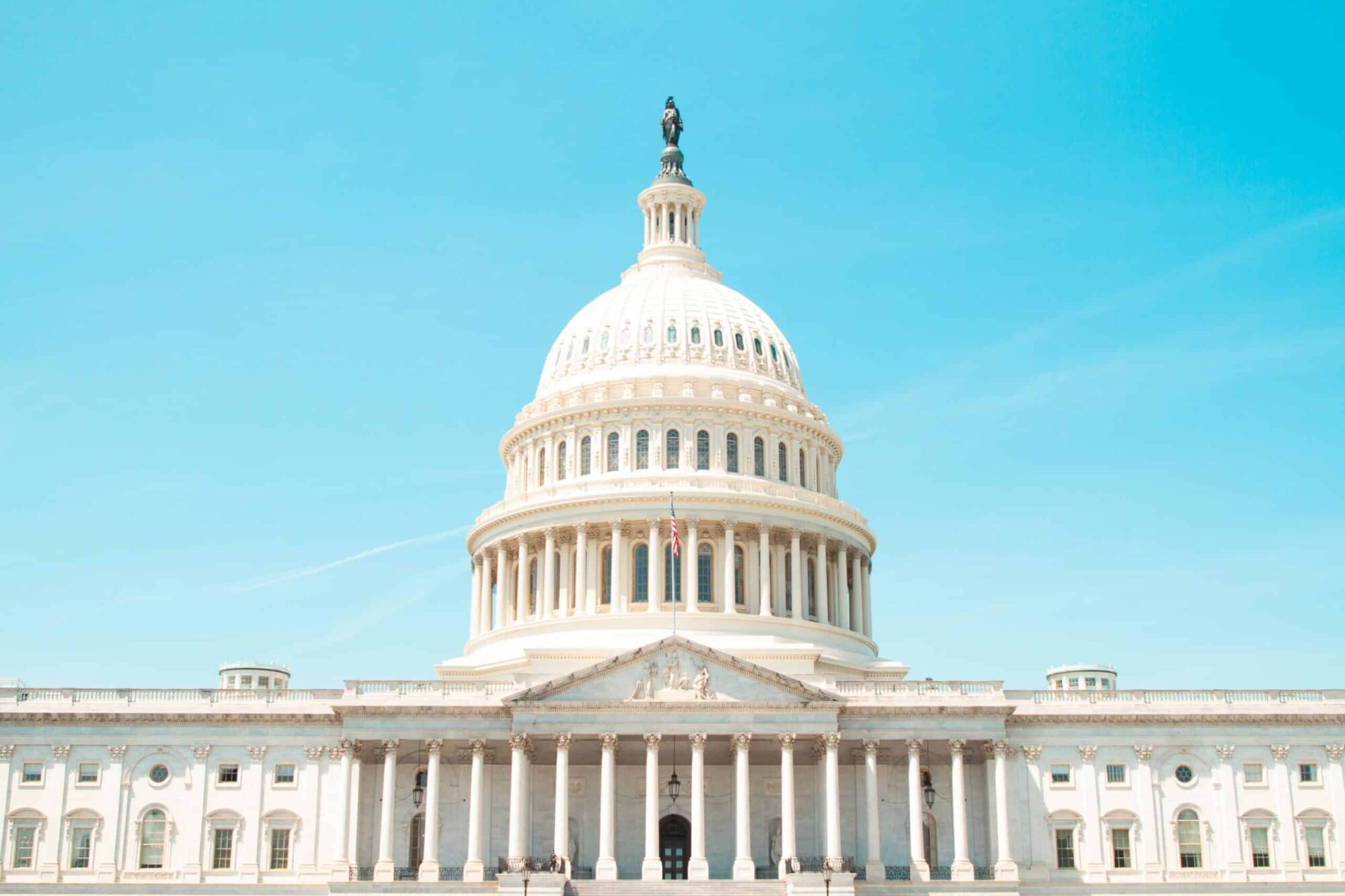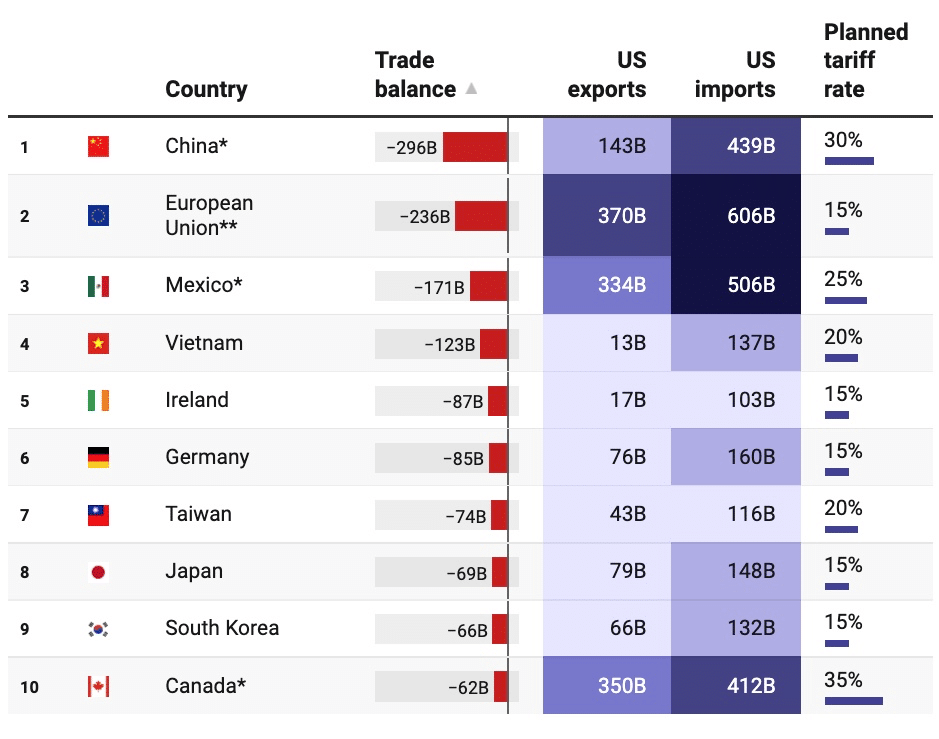
Turn the new Trump tariffs into opportunity with supply chain design. Don’t wait for problems—use scenario planning for disruptions like tariff shocks, simulate possible outcomes, and create contingency playbooks to mitigate cost and risk.
Published by
Published on
August 8, 2025





As of August 7, sweeping new tariffs under the Trump administration have gone into effect, imposing higher import duties on goods from numerous countries. The new reciprocal tariffs ranged from 10% to 50% and directly impact sourcing costs, lead times, and margin performance for global manufacturers and retailers.
If you rely on cross-border flows, you’re likely already seeing the ripple effects of tariffs: climbing freight costs, supplier instability, and margin pressure. What was once a routine sourcing strategy can now destroy profitability in a matter of weeks.

Tariffs aren’t a one-time disruption—they’re part of a broader pattern: labor volatility, supply shocks, inflation, and rising capital costs. And yet, many organizations still treat these as isolated incidents rather than systemic risks.
Leading supply chain executives are changing that mindset. The new competitive edge isn’t stability. It’s responsiveness—how fast you can model the impact and act. According to Gartner, 77% of supply chain leaders are planning network changes to mitigate the impact of new tariffs, with 42% planning supplier changes.

Source: Gartner Executive Pulse: Tariffs Ignite Price Hikes, Supply Chain Shifts and Cost Cuts. 13 June 2025
Today’s most agile supply chains are design-led. That means they don’t wait for problems—they use scenario planning for disruptions like tariff shocks, simulate possible outcomes, and create contingency playbooks to mitigate cost and risk.
With Optilogic supply chain design you can:
Done right, design becomes a source of financial resilience and commercial advantage. And it pays off fast. In one case, a global manufacturer used Optilogic tariff optimization to avoid $8M in cost exposure in under 30 days.
According to Gartner, “While 79% of supply chain leaders said they will pass costs on, more (88%) said they will also try to mitigate costs through supply chain initiatives, such as adjusting supply and production locations.”
Supply chain design can be your lever to mitigate cost and risk without eroding profitability.
Consider whether your organization can confidently answer ‘YES’ to the items on this tariff-related checklist.
While traditional planning tools get stuck in static data and brittle rules, Optilogic gives you a sandbox to model and simulate everything from major policy changes to localized sourcing shifts so you can choose supply chain changes that protect margin and reduce risk.
With the Optilogic supply chain design platform and its built-in Lumina Tariff Optimizer, you can:
And because it’s all cloud-native, your teams can run fast without waiting on IT or external consultants.
The answers to those questions could define your performance this quarter—and your resilience for the long term.
The new tariff wave is not a political debate. It’s a business reality. And the companies that win in this environment aren’t the ones with the most stable networks—they’re the ones that can redesign them in real time.
Interested in how your supply chain holds up under today’s tariff policies? Schedule a strategy session or try Lumina Tariff Optimizer with a free Optilogic Personal account.
As of August 7, sweeping new tariffs under the Trump administration have gone into effect, imposing higher import duties on goods from numerous countries. The new reciprocal tariffs ranged from 10% to 50% and directly impact sourcing costs, lead times, and margin performance for global manufacturers and retailers.
If you rely on cross-border flows, you’re likely already seeing the ripple effects of tariffs: climbing freight costs, supplier instability, and margin pressure. What was once a routine sourcing strategy can now destroy profitability in a matter of weeks.

Tariffs aren’t a one-time disruption—they’re part of a broader pattern: labor volatility, supply shocks, inflation, and rising capital costs. And yet, many organizations still treat these as isolated incidents rather than systemic risks.
Leading supply chain executives are changing that mindset. The new competitive edge isn’t stability. It’s responsiveness—how fast you can model the impact and act. According to Gartner, 77% of supply chain leaders are planning network changes to mitigate the impact of new tariffs, with 42% planning supplier changes.

Source: Gartner Executive Pulse: Tariffs Ignite Price Hikes, Supply Chain Shifts and Cost Cuts. 13 June 2025
Today’s most agile supply chains are design-led. That means they don’t wait for problems—they use scenario planning for disruptions like tariff shocks, simulate possible outcomes, and create contingency playbooks to mitigate cost and risk.
With Optilogic supply chain design you can:
Done right, design becomes a source of financial resilience and commercial advantage. And it pays off fast. In one case, a global manufacturer used Optilogic tariff optimization to avoid $8M in cost exposure in under 30 days.
According to Gartner, “While 79% of supply chain leaders said they will pass costs on, more (88%) said they will also try to mitigate costs through supply chain initiatives, such as adjusting supply and production locations.”
Supply chain design can be your lever to mitigate cost and risk without eroding profitability.
Consider whether your organization can confidently answer ‘YES’ to the items on this tariff-related checklist.
While traditional planning tools get stuck in static data and brittle rules, Optilogic gives you a sandbox to model and simulate everything from major policy changes to localized sourcing shifts so you can choose supply chain changes that protect margin and reduce risk.
With the Optilogic supply chain design platform and its built-in Lumina Tariff Optimizer, you can:
And because it’s all cloud-native, your teams can run fast without waiting on IT or external consultants.
The answers to those questions could define your performance this quarter—and your resilience for the long term.
The new tariff wave is not a political debate. It’s a business reality. And the companies that win in this environment aren’t the ones with the most stable networks—they’re the ones that can redesign them in real time.
Interested in how your supply chain holds up under today’s tariff policies? Schedule a strategy session or try Lumina Tariff Optimizer with a free Optilogic Personal account.
Fill out the form to unlock the full content
Lorem ipsum dolor sit amet, consectetur adipiscing elit. Suspendisse varius enim in eros elementum tristique. Duis cursus, mi quis viverra ornare, eros dolor interdum nulla, ut commodo diam libero vitae erat. Aenean faucibus nibh et justo cursus id rutrum lorem imperdiet. Nunc ut sem vitae risus tristique posuere.

.png)

.png)
